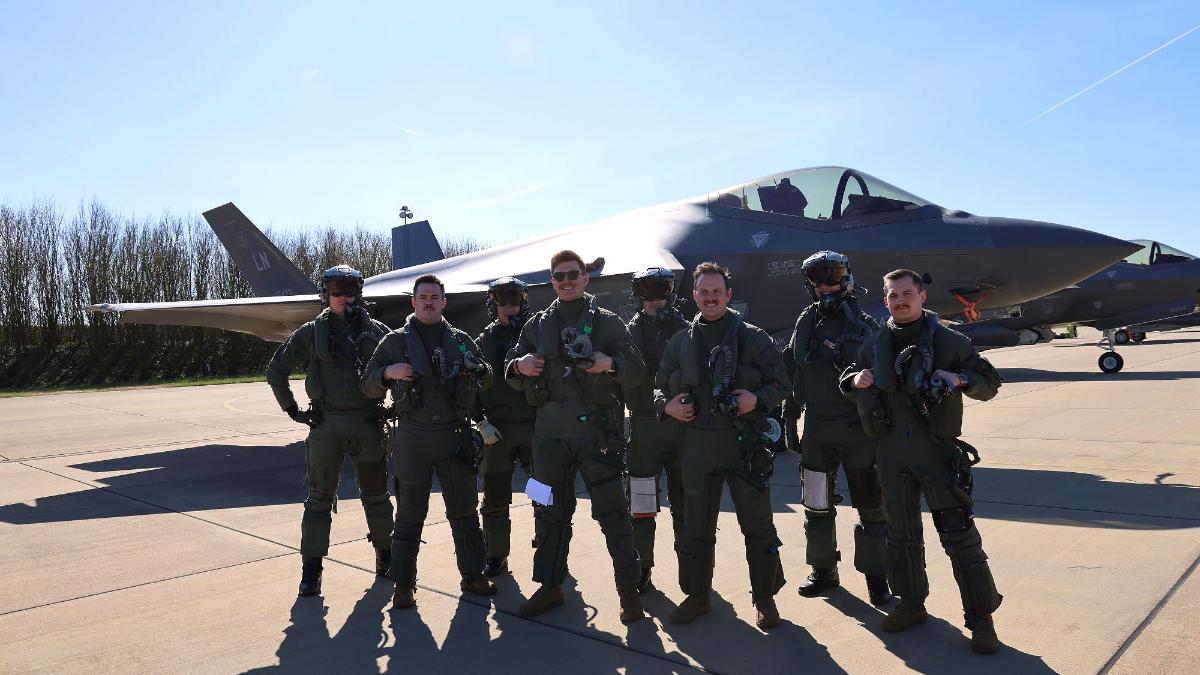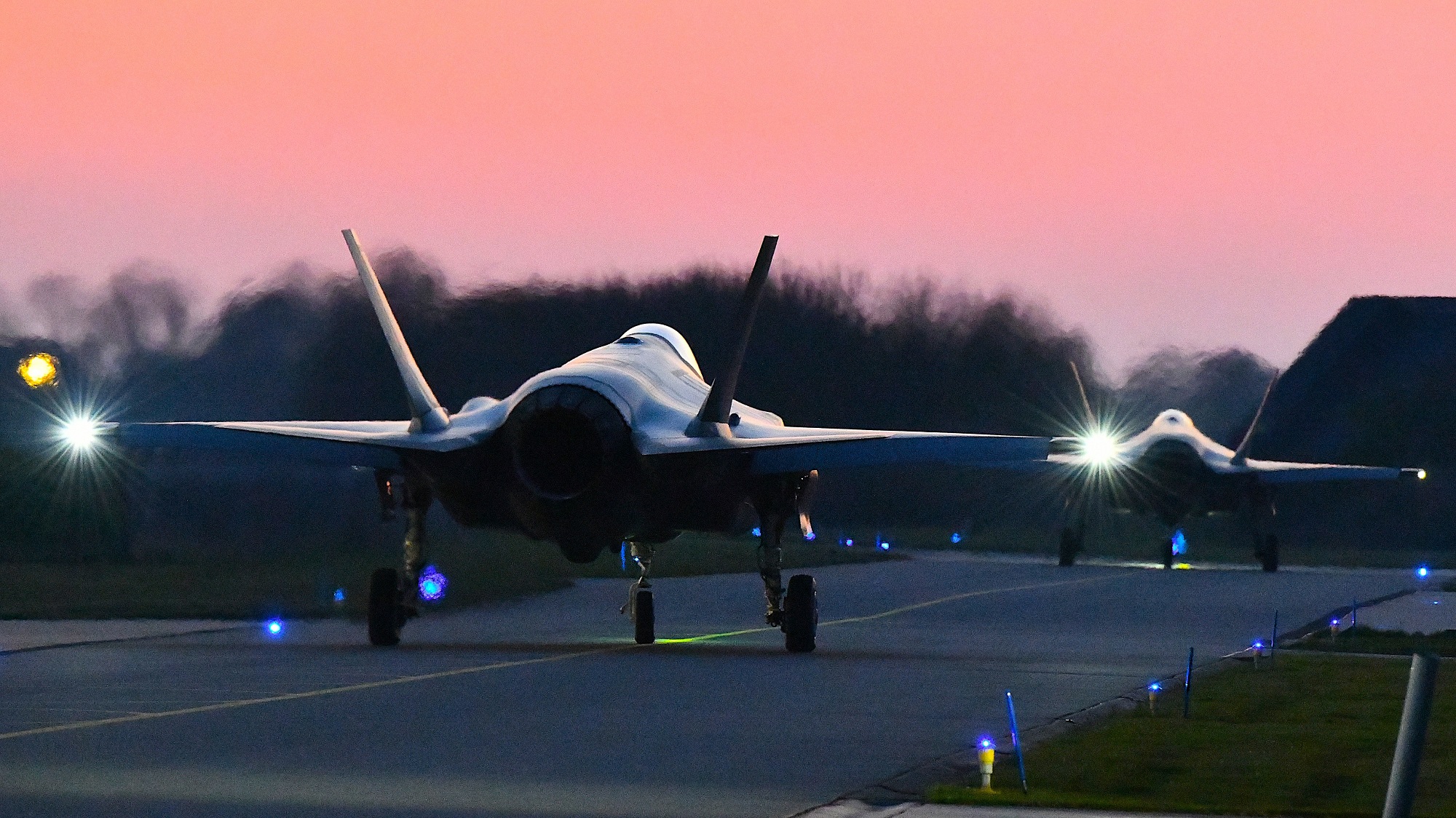Ramstein Flag 25 enhanced integration between 4th and 5th generation fighter jets

Finland participated in NATO’s large-scale live-fly exercise alongside Allied nations.
A Finnish detachment of five F/A-18 Hornet fighter jets and approximately 70 personnel took part in NATO’s extensive Ramstein Flag 25 air exercise over the past two weeks.
The main operating base of the exercise, which took place from 31 March to 11 April 2025, was Leeuwarden in the Netherlands, where the Finnish fighter jets were deployed. In addition to the Finnish Hornets, Dutch and U.S. F-35A Lightning II, Swedish JAS 39 Gripen, German Eurofighter, French Rafale, and Greek F-16 fighter jets operated from Leeuwarden. Air operations were conducted primarily over the North Sea.
This was the second iteration of Ramstein Flag, involving 15 NATO nations and more than 90 aircraft operating mainly from air bases in the Netherlands, the United Kingdom, and Denmark.
One of Finland’s key objectives in the exercise was to develop integration between fourth- and fifth-generation fighter aircraft—an objective that was successfully achieved, according to Lieutenant Colonel Rami Lindström of the Karelia Air Wing, who led the Finnish detachment. The Karelia Air Wing was responsible for planning and executing Finland’s participation in the exercise.
A significant number of F-35 aircraft from the Netherlands, the United States, Denmark, and Italy took part in Ramstein Flag. As the number of fifth-generation fighters in Europe continues to grow rapidly, so does the need for integration with existing fourth-generation platforms.
“This is the fourth major exercise in which we’ve been able to implement and develop joint tactics that allow newer sensors to support older platforms, thereby maximizing performance across the board,” said Lindström.
Finland is transitioning from fourth-generation F/A-18s to fifth-generation F-35s. During this transition period, Finland will operate both aircraft types in parallel, making it essential to enhance their integration.

Night flying and large-force air operations
One of the defining features of Ramstein Flag 25 was its focus on evening and night-time flying.
Both Finland and NATO must be able to defend effectively at night as well as during daytime.
“Fighting in the dark is more challenging, which is exactly why it has to be trained—and even more than it currently is,” Lindström noted.
Operations were carried out safely, and according to Lindström, the night-time views over the North Sea through night vision goggles were unmatched.
One of the most valuable aspects of the exercise for Finland was operating with allies in large-force multinational air operations with complex and instructive scenarios. In addition to advancing tactics for fourth- and fifth-generation fighters, two new Mission Commander qualifications were achieved by Finnish fighter pilots during the exercise.
The aim of Ramstein Flag 25 was to train NATO air forces for rapid operations in collective defence missions under Article 5.
During the exercise, Lindström himself flew a night mission that involved 80 aircraft launched from bases in the Netherlands, the United Kingdom, Denmark, Germany, and Italy.
The mission objective was to suppress enemy air defences using both electronic warfare and kinetic means. The air operation was supported by capabilities from land, sea, and space. Most participants conducted air-to-air refuelling, and fighter detachments were led from both airborne and ground-based C2.
“The Mission Commander had developed a sound plan with the detachments the previous day, but the adversary’s aggressive actions and the high-risk level made the mission extremely demanding. A great mission!” Lindström said, clearly pleased with the outcome.

Well-executed exercise
The Finnish detachment received consistently positive feedback for its performance. Skills and cooperation were noted to be at a high level.
One of the exercise’s objectives was to enhance interoperability with NATO allies.
“Every country has its own culture and operational nuances, even if the foundations are the same. It’s absolutely essential to train together in order to understand and embrace different ways of operating than what we’re used to in the Nordics,” Lindström explained.
Ramstein Flag is a multinational air exercise coordinated by NATO Allied Air Command (AIRCOM), now held for the second time. This year, the Netherlands served as the host nation.
The Royal Netherlands Air Force successfully provided host nation support, and the exercise ran smoothly overall.
“In many exercises, you end up solving unexpected challenges, but in this case, there were virtually none. That’s a clear result of good preparation on all sides,” Lindström said.
From a logistics perspective, large international exercises like Ramstein Flag help develop the Finnish Air Force’s deployment capability and standardize operating procedures.
“We now have a solid package that is scalable, and can be deployed quickly to different locations with quick preparation,” Lindström concluded.




